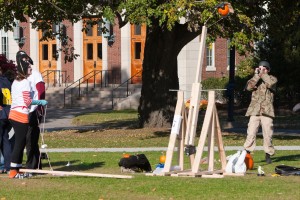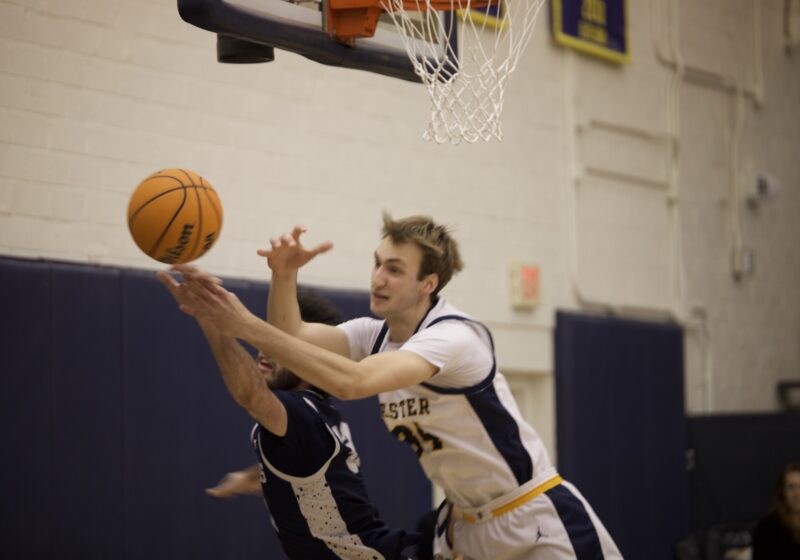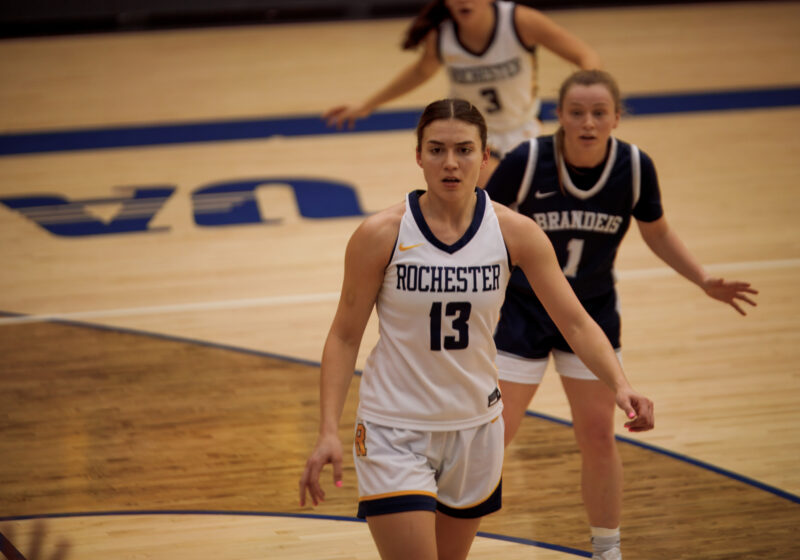
Courtesy of Stephen Robinson
Across the Genesee River on Friday, Oct. 28 at 3 p.m., pumpkins will be descending from the sky — but don’t expect the Great Pumpkin to be among them. This bit of Halloween magic is strictly scientific, as these icons of the holiday will be launched from trebuchets, catapults and air cannons built by teams in the 10th annual Pumpkin Launch, run by the UR chapter of ASME (formerly known as the American Society of Mechanical Engineers).
In 2002, the Jack-O-Launcher Competition, as it was first called, was started by Dan Nathan-Roberts, who at the time was a junior and social chair of ASME. Setting the event in motion took more than just pulling a trigger on a launcher — rules and other logistics needed to be organized in order to make the event sustainable. Support for the new venture came in from all sides, as students in the mechanical engineering department, Assistant Dean of the Hajim School of Engineering Lisa Norwood, UR Vice President Paul Burgett and professor David Quesnel banded together to get the pumpkins off the ground. But while the event was shaping up to be an opportunity to flaunt UR’s engineering abilities and Halloween spirit, it developed into much more — an opportunity to get the Rochester community involved on campus.
From the beginning, local grade school and high school students, community members and the Rochester Institute of Technology have been invited to the Pumpkin Launch. This year, six groups have registered to compete -— half of which come from outside UR, including two groups from Upward Bound, which provides fundamental support to pre-college students, and one group from Williamson High School. And with prizes given this year for best workmanship, best team spirit and best accuracy, teams aren’t just awarded for engineering abilities.
“It was really important to me from the beginning for everyone to have a chance of winning, which is why we had [prizes] for the best looking launcher,” Nathan-Roberts said of the past years’ prizes.
Beyond the change in prize categories, the Pumpkin Launch has seen its share of transformations over the years, from its name change to its different rules and regulations. This year, the biggest adjustment to the event is the launch site. After the event was displaced from the Wilson Quadrangle due to the construction, it has found a new home on the baseball fields in Genesee Valley Park near Staybridge Suites. However, those in the mechanical engineering department have concerns about keeping up attendance.
“The move off campus will have a huge effect [on the Pumpkin Launch] because foot traffic is our best way to get attention to the whole event,” Administrative Assistant Jill Morris said.
While there is a slight change of scenery, many of the changes help keep the Pumpkin Launch fresh, as the responsibility for the event passes down to each new executive board of ASME. “[The executive board organizers] have kept innovating -— refining and changing the rules slightly to keep it interesting, organizing sponsorships and running the event,” Nathan-Roberts said. “Each one of them left their mark on the event, and it wouldn’t have lasted if it stayed the same as it was.”
Vice Chair of the UR chapter of ASME and senior Michael Hua is part of the executive board this year, and he is leaving his mark by being a part of the group that is changing the maximum target distance from 200 to 300 feet. According to Hua, several teams came close to 200 feet last year, while most threw 50 to 100 feet.
Occasionally a problem arises in the launch, such as when a pumpkin flies backward off the launcher. While this usually happens to a few groups, safety always is the number one priority in pumpkin launching — a phrase listed repeatedly on the regulations guidelines throughout the past decade.
But along with safety, the Pumpkin Launch has shown two other truly important facets over the past 10 years: an increased sense of community in Rochester and, quite simply, having fun.
“When it started I wanted to give the engineers an opportunity to have fun doing things outside and am thrilled with how popular it has been,” Nathan-Roberts said. “It is so much fun to see so many engineers and community members having a blast making pumpkins fly.”
On Friday, while the groups will show off the hard work that went into making their launchers — sometimes taking months to build -— there’s more than just pumpkins that will be soaring through the air. Each launched pumpkin carries with it 10 years of computing, 10 years of community bonding and 10 years of celebrating Halloween with science.
Olfano is a member of the class of 2012.



